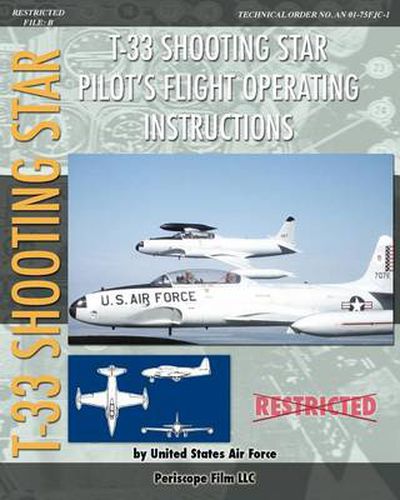Readings Newsletter
Become a Readings Member to make your shopping experience even easier.
Sign in or sign up for free!
You’re not far away from qualifying for FREE standard shipping within Australia
You’ve qualified for FREE standard shipping within Australia
The cart is loading…






This title is printed to order. This book may have been self-published. If so, we cannot guarantee the quality of the content. In the main most books will have gone through the editing process however some may not. We therefore suggest that you be aware of this before ordering this book. If in doubt check either the author or publisher’s details as we are unable to accept any returns unless they are faulty. Please contact us if you have any questions.
The T-33 Thunderbird was the training variant of the U.S. Air Force’s first production jet fighter, the F/P-80 Shooting Star . Originally designed by Lockheed’s Kelly Johnson during WWII, the P-80 went from drawing board to airborne in a record 150 days. The T-bird was three feet longer than the P-80, and boasted a second seat, instrumentation and flight controls. Equipped with an Allison J33 turbojet, the T-33 had a maximum speed of 600 mph, a range of over 1200 miles in ferry, and a service ceiling of 48,000 feet. The Navy also operated the T-33 as the TV-2 or T-33B, and eventually produced a carrier-capablevariant called the T2V-1/T-1A SeaStar. In addition to its role as a trainer, the plane served as a drone control aircraft, reconnaissance platform, and target tow aircraft. In foreign service the T-33, which could carry rockets, bombs and gun pods, was used as a combat aircraft. Perhaps its most notable combat role was during the Bay of Pigs, when T-33s flown by the Cuban Revolutionary Air Force (FAR) attacked ships and aircraft of the exile forces, helping fend off the invasion. One of the most successful and enduring aircraft in history, the T-33 flew in the air forces of over 30 nations. Over 6500 were produced between 1949-59, and some continue to fly today. Originally printed by Lockheed and the U.S.A.F., this Flight Operating Handbook taught pilots everything they needed to know before entering the cockpit. Originally classified Restricted , the manual was declassified and is here reprinted in book form. This affordable facsimile has been slightly reformatted. Care has been taken however to preserve the integrity of the text.
$9.00 standard shipping within Australia
FREE standard shipping within Australia for orders over $100.00
Express & International shipping calculated at checkout
This title is printed to order. This book may have been self-published. If so, we cannot guarantee the quality of the content. In the main most books will have gone through the editing process however some may not. We therefore suggest that you be aware of this before ordering this book. If in doubt check either the author or publisher’s details as we are unable to accept any returns unless they are faulty. Please contact us if you have any questions.
The T-33 Thunderbird was the training variant of the U.S. Air Force’s first production jet fighter, the F/P-80 Shooting Star . Originally designed by Lockheed’s Kelly Johnson during WWII, the P-80 went from drawing board to airborne in a record 150 days. The T-bird was three feet longer than the P-80, and boasted a second seat, instrumentation and flight controls. Equipped with an Allison J33 turbojet, the T-33 had a maximum speed of 600 mph, a range of over 1200 miles in ferry, and a service ceiling of 48,000 feet. The Navy also operated the T-33 as the TV-2 or T-33B, and eventually produced a carrier-capablevariant called the T2V-1/T-1A SeaStar. In addition to its role as a trainer, the plane served as a drone control aircraft, reconnaissance platform, and target tow aircraft. In foreign service the T-33, which could carry rockets, bombs and gun pods, was used as a combat aircraft. Perhaps its most notable combat role was during the Bay of Pigs, when T-33s flown by the Cuban Revolutionary Air Force (FAR) attacked ships and aircraft of the exile forces, helping fend off the invasion. One of the most successful and enduring aircraft in history, the T-33 flew in the air forces of over 30 nations. Over 6500 were produced between 1949-59, and some continue to fly today. Originally printed by Lockheed and the U.S.A.F., this Flight Operating Handbook taught pilots everything they needed to know before entering the cockpit. Originally classified Restricted , the manual was declassified and is here reprinted in book form. This affordable facsimile has been slightly reformatted. Care has been taken however to preserve the integrity of the text.